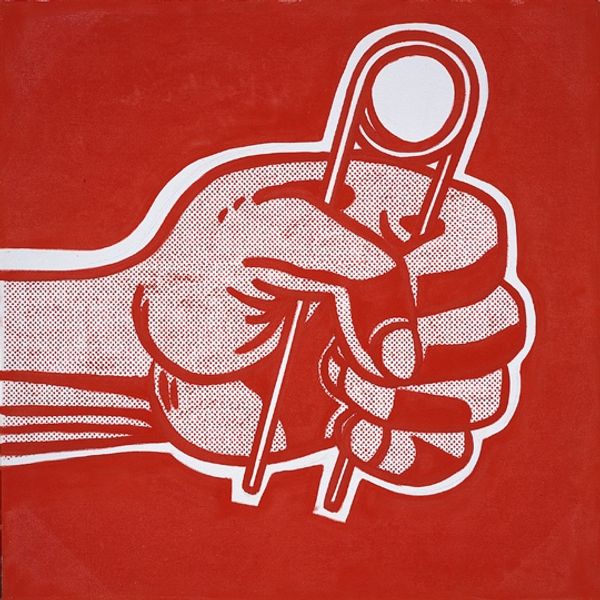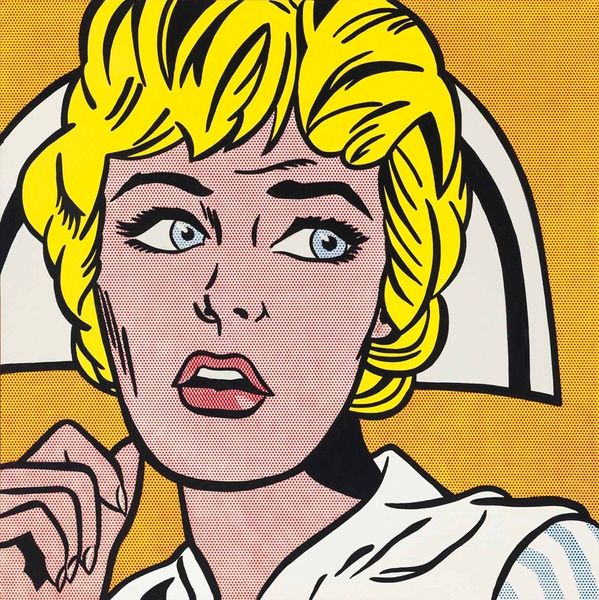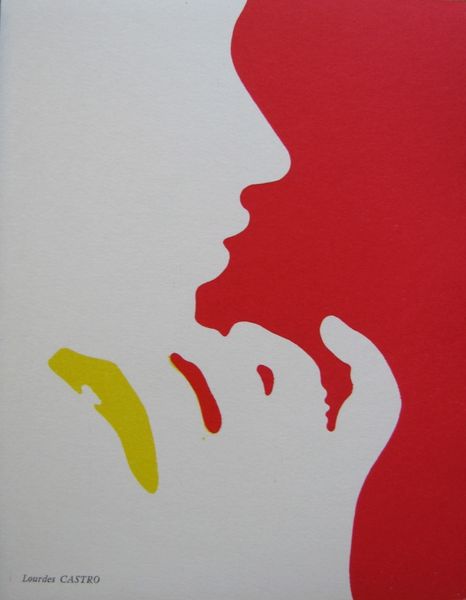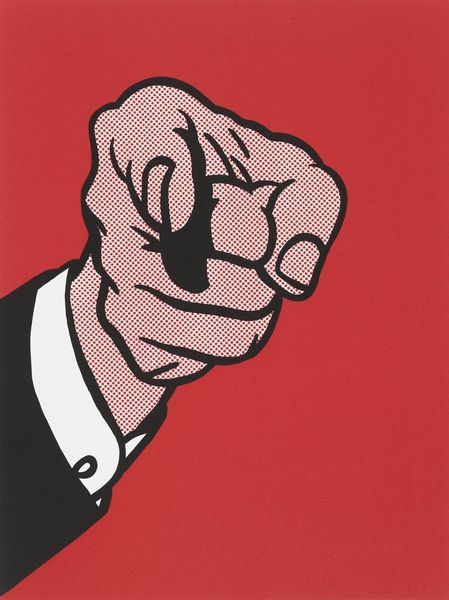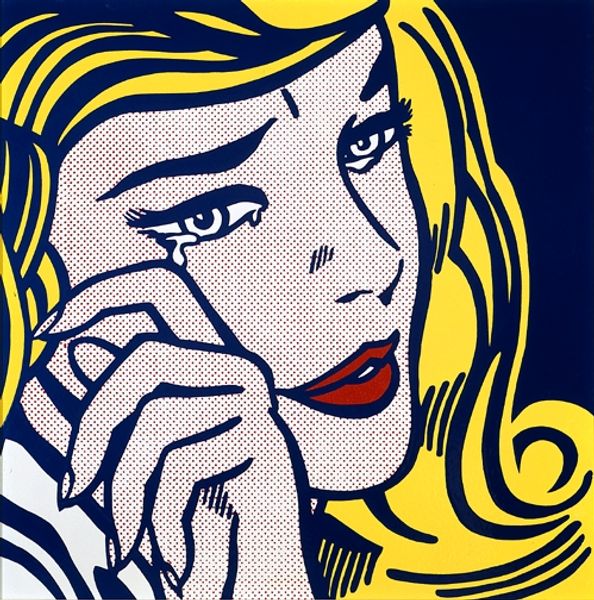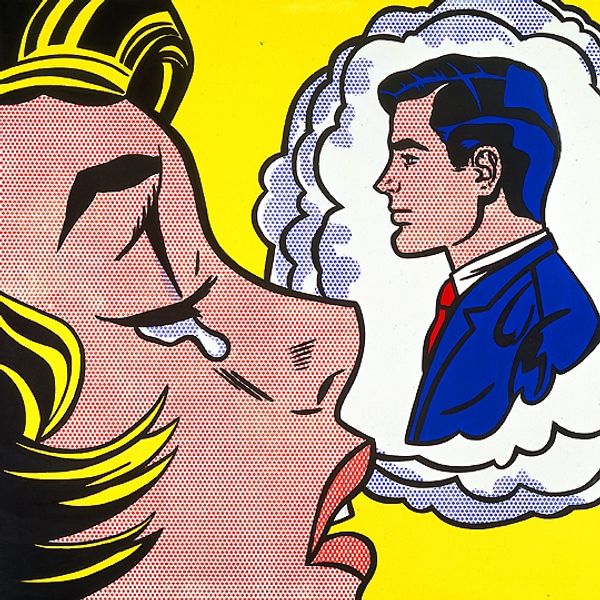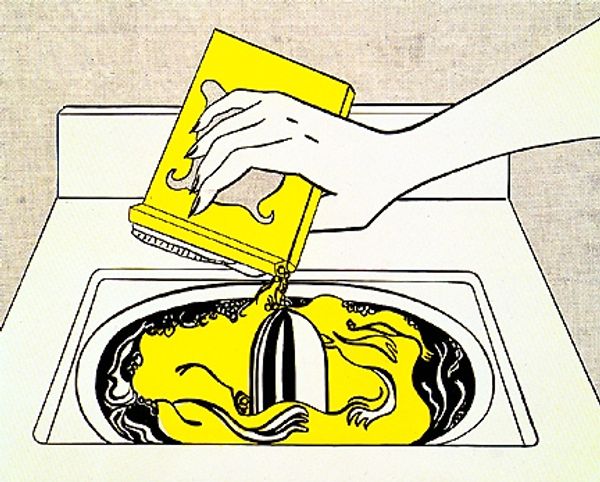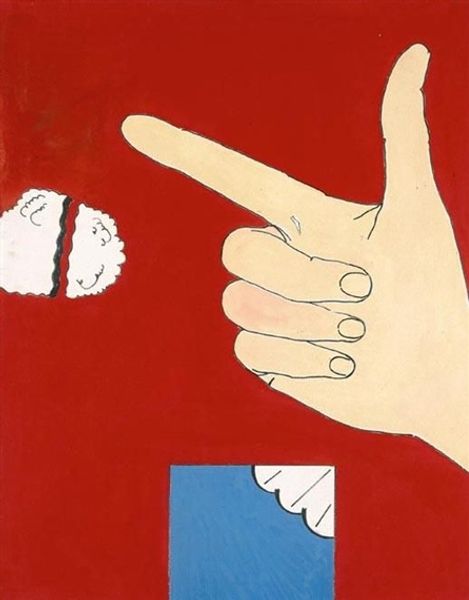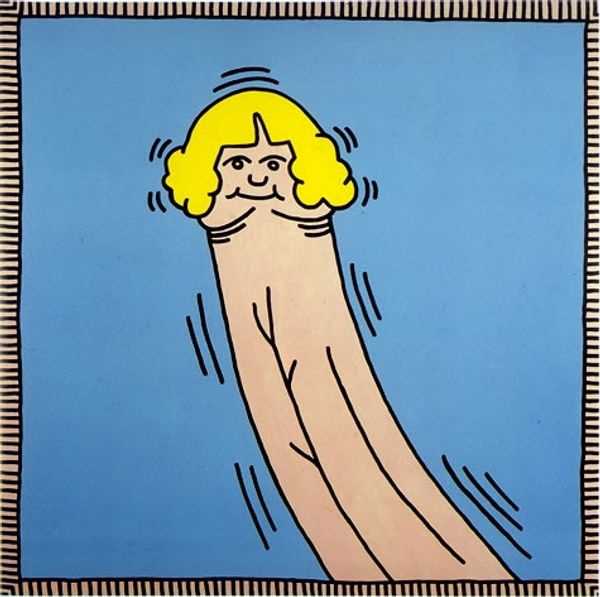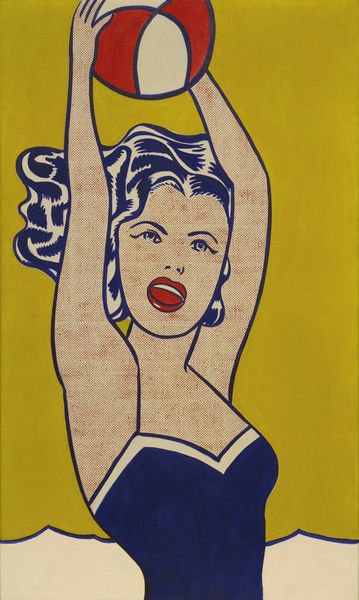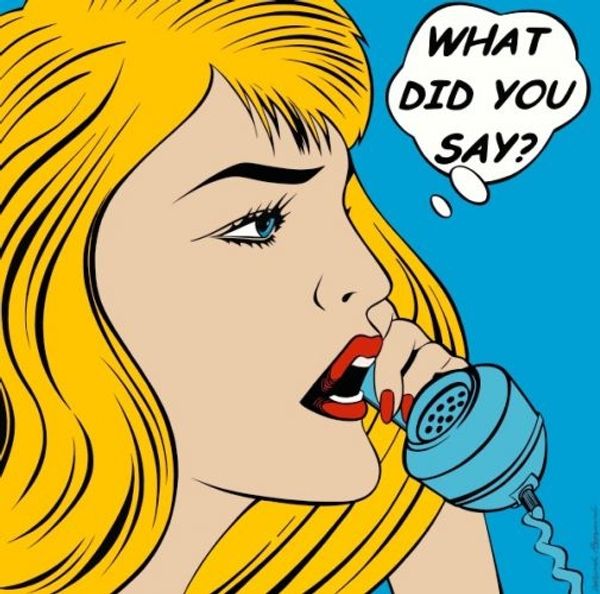
acrylic-paint
#
contemporary
#
narrative-art
#
appropriation
#
caricature
#
pop art
#
acrylic-paint
#
geometric
#
pop-art
Dimensions: 91.4 x 172.7 cm
Copyright: Roy Lichtenstein,Fair Use
Editor: Here we have Roy Lichtenstein’s "Spray" from 1962, done with acrylic paint. There's a pop-art aesthetic, but the composition is so simple – just a hand spraying something. I'm curious, how do you interpret this work? Curator: Well, on the surface, it’s a mundane image of an everyday action. But Lichtenstein, by appropriating the imagery of mass media, challenges us to think about consumer culture in the ‘60s. Consider the woman’s hand – manicured, carefully delineated – holding a spray can. It speaks to the rise of consumerism and the commodification of beauty, even domestic labor. It raises questions, doesn’t it, about the female role in this rapidly changing society and what she is "spraying"? Is it a product, or perhaps concealing something? Editor: That’s a really interesting perspective. I hadn’t really thought about the gendered aspect of it. Is there a connection to the social context of the time? Curator: Absolutely. The 1960s witnessed the second-wave feminism movement gaining momentum. So, we need to think about how Lichtenstein's work engages with the visual language of advertising, often aimed at women, and the implicit message that they need these products. By using comic-like techniques he blurs the boundaries between 'high' and 'low' art. This challenges the very notion of art as separate from everyday life. How does the spray action relate to art history for you? Editor: Now I see it's like painting, he is doing that with paint! So by elevating a commercial image, it forces us to look at these mass-produced images in a completely new light, right? Curator: Exactly. It encourages critical awareness of the manipulative power of advertising and its impact on our desires and perceptions. Art becomes a mirror reflecting societal anxieties. Editor: Thanks, I'm going to spend some time digging deeper into these connections. It feels like there's much more to explore here than first meets the eye. Curator: Precisely, and hopefully, that is how it sparks reflection on art as part of society and not just an aesthetic experience.
Comments
No comments
Be the first to comment and join the conversation on the ultimate creative platform.
